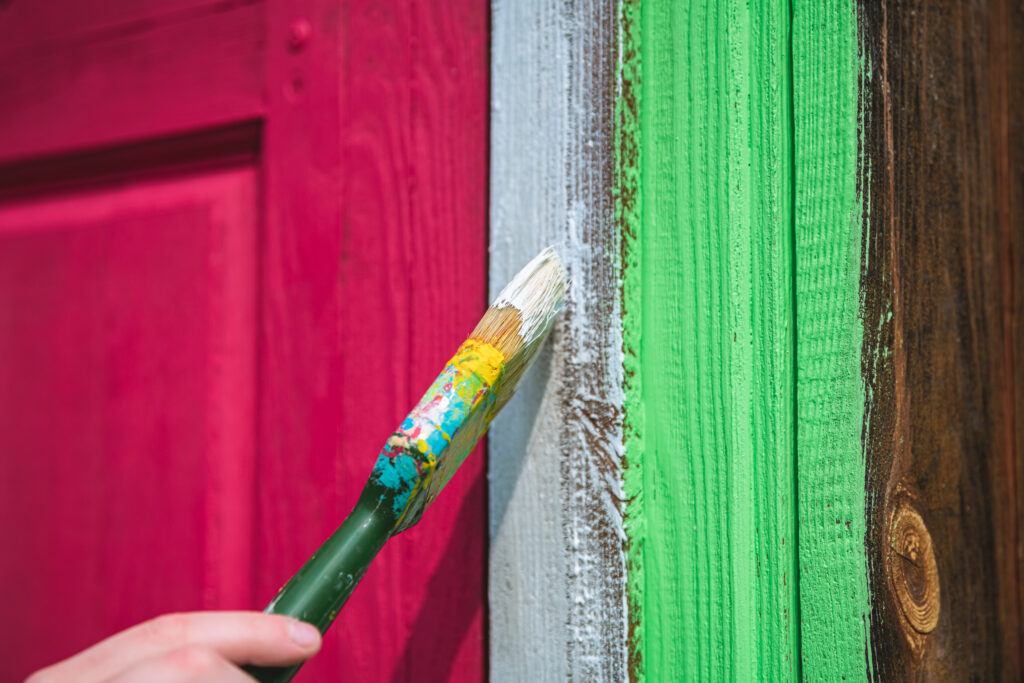Paint your fence this August, and you could save yourself a lot of hassle come next year. With the UK’s unpredictable seasons, waiting for the ‘perfect time’ to tackle outdoor DIY jobs like fence painting can mean missing your opportunity altogether. So, the big question is: Should you paint your fence in August or wait till spring?
In this article, we’ll explore the pros and cons of both seasons, compare product drying times and weather conditions, outline the ideal prep process, and help you decide when it is truly best to pick up the brush, with a gentle nudge toward now, while the weather is on your side.
Why Painting Your Fence Matters
Fences do more than mark boundaries. They provide privacy, security, and curb appeal, and like any outdoor woodwork, they need protection from the elements. Paint, stain, or wood preservative acts as a shield against moisture, UV rays, pests, and fungal decay.
Unprotected timber weathers quickly, turning grey, cracking, or becoming a home for moss and mould. A simple coat of protective paint or stain can extend your fence’s life by years.
Painting in August: Why It’s a Good Idea
August, particularly in the UK, offers some of the most reliable weather conditions for exterior woodwork. Here’s why acting now might be the smart choice:
- Dry Weather Means Better Results
Late summer often brings dry spells with lower rainfall and longer daylight hours, perfect conditions for painting. Rain can ruin an uncured finish or trap moisture in the wood, leading to peeling or rot.
- Warmer Temperatures Help Paint Cure Properly
Most fence paints and stains work best when applied in temperatures between 10°C and 25°C. August days often fall comfortably within this range, speeding up drying and curing time.
- Soil is Still Soft for Easy Fence Maintenance
If you need to replace damaged panels or do prep work like fixing wobbly posts or clearing vegetation, the ground is still soft enough in August to make digging and adjustments manageable.
- You’ll Beat the Autumn Damp
Once autumn arrives, fluctuating temperatures and increased moisture make it harder to get the job done properly. Tackling your fence in August gives your wood a chance to dry, seal, and settle before the wetter months set in.
- Most Paints and Treatments Are Readily Available
DIY stores and garden centres are well-stocked in summer. Come spring, you may face product shortages or long wait times due to seasonal demand.
Product Drying Times: Summer vs Spring
Here’s a quick comparison of typical fence paint drying and recoat times based on UK seasonal conditions:
| Season | Avg. Temperature | Drying Time (Touch Dry) | Recoat Time | Risk of Rain |
| August | 17–23°C | 2–4 hours | 4–8 hours | Low to moderate |
| Early Spring | 10–14°C | 4–8 hours | 12–24 hours | Moderate to high |
Note: High humidity in spring slows drying and increases the chance of condensation overnight, which can affect adhesion and finish quality.
Spring Painting: The Case for Waiting

That said, spring isn’t without merit, especially for those who missed their summer painting window or prefer cooler working conditions. Here are a few reasons some opt to wait:
- Spring is ideal for planting and landscaping, so painting the fence alongside other garden updates can feel efficient.
- Less risk of intense sun, which can cause paint to dry too quickly and result in cracking or streaking.
- It’s a good time for annual maintenance and inspection of all garden structures.
However, these benefits can be offset by unpredictable showers, chilly mornings, and higher humidity, which, for fence painting, are not ideal.
Preparing Your Fence: What You Need to Do Before Painting
Whether you’re painting in August or spring, preparation is the key to a professional finish that lasts. Here’s what you need to do before you even open the tin:
- Clean the Fence Thoroughly
Use a stiff brush to remove dirt, moss, and cobwebs. For stubborn grime, a diluted detergent solution or specialised fence cleaner can help. Allow the fence to dry completely before applying any treatment.
- Remove Old Flaking Paint
Scrape or sand off peeling paint with a wire brush or sandpaper. This ensures better adhesion for your new coat and prevents bubbling.
- Check for Repairs
Look for rotten panels, loose nails, or cracked posts. Fix these before painting — there’s no point covering up structural issues.
- Mask Off the Surrounding Areas
Use dust sheets and masking tape to protect plants, patios, and nearby surfaces from splashes or drips.
- Choose the Right Product
Pick a paint, stain, or treatment that’s weather-resistant and suitable for the wood type. Water-based products are easier to clean and dry faster, while oil-based ones tend to last longer and penetrate deeper.
- Timing is Everything
Paint in the morning after the dew has evaporated and stop mid-afternoon to avoid condensation as the temperature drops.
Which Products Work Best in Late Summer?
For August painting in the UK, look for quick-dry, UV-resistant formulas that can be applied in mild heat. Some trusted options include:
- Cuprinol Ducksback: Water-repellent, wax-enriched formula; showerproof in one hour.
- Ronseal Fence Life Plus: Good coverage and flexible application conditions (works on damp wood too).
- Barrettine Wood Protective Treatment: Ideal for deeper timber penetration and long-lasting results.
Top Tips for August Fence Painting
- Choose a dry, overcast day to avoid direct sunlight drying the paint too quickly
- Use a long-handled brush or sprayer for faster coverage on large panels
- Always check the weather forecast — dry for at least 24 hours is best
- Don’t forget the top and bottom edges of panels, where moisture easily seeps in
Final Verdict: August vs. Spring?
While both seasons have their advantages, August comes out on top for drying time, weather predictability, and overall ease of application. With the UK climate as it is, waiting for a “perfect” spring day may leave your fence exposed to another cycle of wind, rain, and sun damage.
Unless your fence is already soaked or the forecast is dismal, now is the time to act. You’ll protect your timber, enhance your garden, and save yourself the stress of trying to paint during unpredictable spring showers.
Takeaway!
If your fence has faded, flaked, or just looks tired, don’t wait for next year. August offers a window of opportunity, dry weather, warm temperatures, and enough daylight to get the job done right. Paint your fence now to make the most of the season.
By tackling your fence painting now, you’re investing in your home’s appearance and longevity. And once autumn rolls around, you’ll be glad you ticked it off the list while the sun was still shining.
For more tips, visit thehouseholddaily and feel free to share your experiences with us.


















